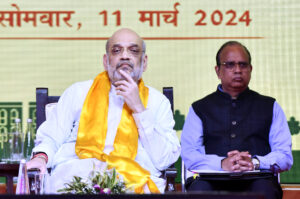Nepal willing to talk out map issue with India: There’s always room for dialogue | Exclusive
[ad_1]
Days after it published map showing Kalapani, Limpiyadhura and Lipulekh areas in Uttarakhand as its own, a sense is growing in Nepal that separate cartographical publications would not resolve the border issues with India.
Nepal feels that the final decision on the map can only come by resolving the lingering boundary question. Sources in the government of Nepal told India Today that while both sides have updated their maps, bilateral talks are the only way forward.
“International borders are decided by mutual agreements irrespective of what we have published or the actual control of the territory by a State. It has to be concluded and settled through mutual treaties and understanding,” said a highly placed source in the Nepalese government.
“Unilateral publication of maps by India or Nepal does not solve the border issue,” said the source a high ranking official adding, both sides should come to the talking table.
The source said Kathmandu has proposed dates for foreign secretary-level meeting with New Delhi on two occasions. But New Delhi is yet to send a response.
India published its updated map on November 2 last year to reflect reorganisation of Jammu and Kashmir, and Ladakh. In this map, India included Kalapani, an area claimed by Nepal.
India Today has learnt that Nepal immediately got in touch with India and asked for talks. On May 8 this year, Defence Minister Rajnath Singh inaugurated the road link from Dharchula to Lipulekh (near India-China border) known as Kailash-Mansarovar Yatra Route. That snowballed into a huge political issue in Nepal.
“When there are problems, we should sit together and not avoid talks. Border issues are sensitive matter. After [publication of] the map, it became more sensitive. Inauguration of the road link to Lipulekh led the Nepali public and the opposition to raise the matter more vehemently,” explained the official.
Nepal tried to reach out to India and talk about the issue. Ministry of Foreign Affairs in Kathmandu, Nepal’s embassy in Delhi tried to establish contact with Indian side.
To a question on what would happen after the bill on the map is passed in Nepal’s parliament, the source said if positions and decisions were so irreversible then India would also not be able to go back on the changes it made to its own map.
He said, “There is always room for dialogue. The only reason why Nepal needs a constitutional amendment is because we have our map on our emblem. Any change to the map will have to be reflected on the official stamp.”
“India does not need constitutional amendment since there is no map on the Indian emblem. Nepal has to do it because Nepal’s map has to be changed on its emblem. That is why Nepal needs constitutional amendment,” he added.
The only way to solve the issue is to “talk directly”, the official emphasised. “We have our documents, our maps, and India has its. So, we should sit and discuss,” he said.
Between 2014 and 2020, not a single meeting has taken place on the border question between India and Nepal.
“The area that we say is ours is represented on our map, and the area India says is theirs is represented on their map. In order to solve the conflicting stand, both sides should sit down and resolve this longstanding issue,” said the source.
A diplomatic mechanism was developed at foreign secretary level to resolve the border problem in 2014. In 2014, there was a joint commission of two foreign ministers. They had directed the foreign secretaries to discuss and come to a solution.
In 2016, the joint commission met again and reiterated that the border issue should be resolved at the foreign secretary level. In 2019, the foreign ministers directed the foreign secretaries to talk to resolve the outstanding issues but the talks are yet to take place.
To a question on Nepal playing the China card, the official said, “Nepal is a sovereign, independent country. There have been different parties and governments in the past who have always maintained that there is a border problem. It is not new. Nepal is not instigated by any third country.”
Meanwhile, India Today has learnt that other channels of communication are open between Nepal and the India. These channels include government officials, political leaders and members of civil society, as the two countries attempt to bring the relationship back on track.
[ad_2]
Source link






